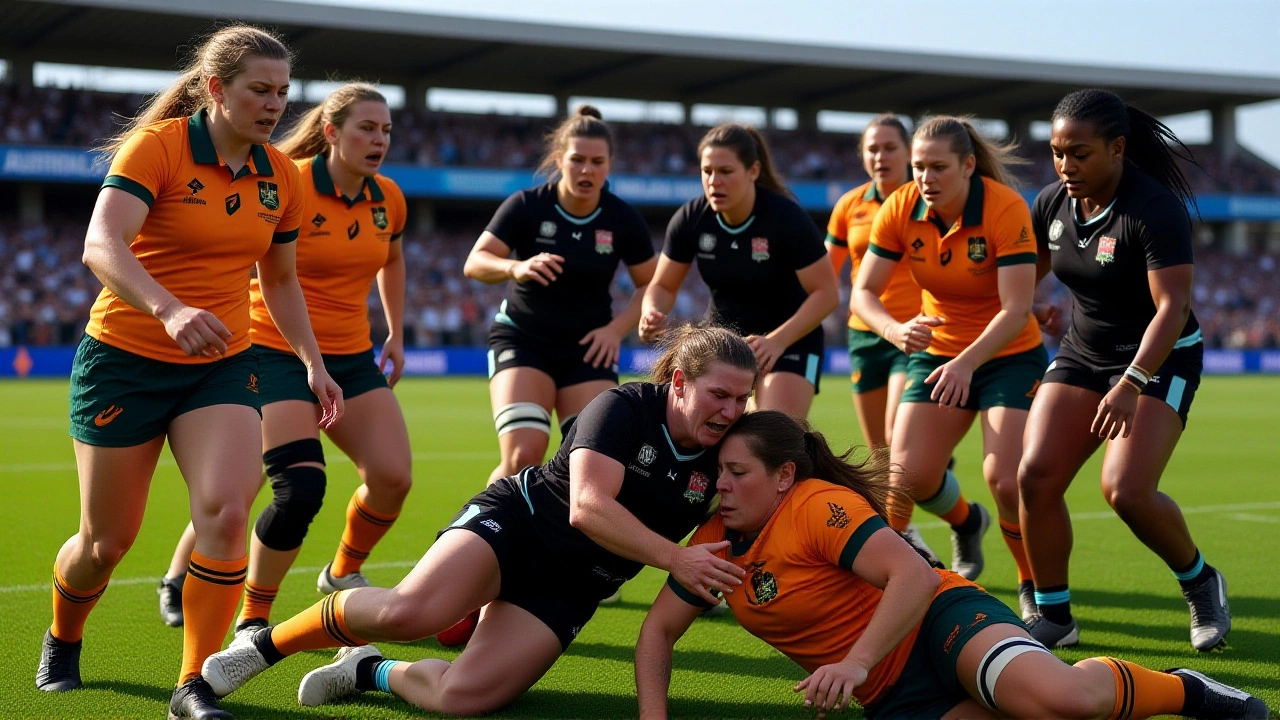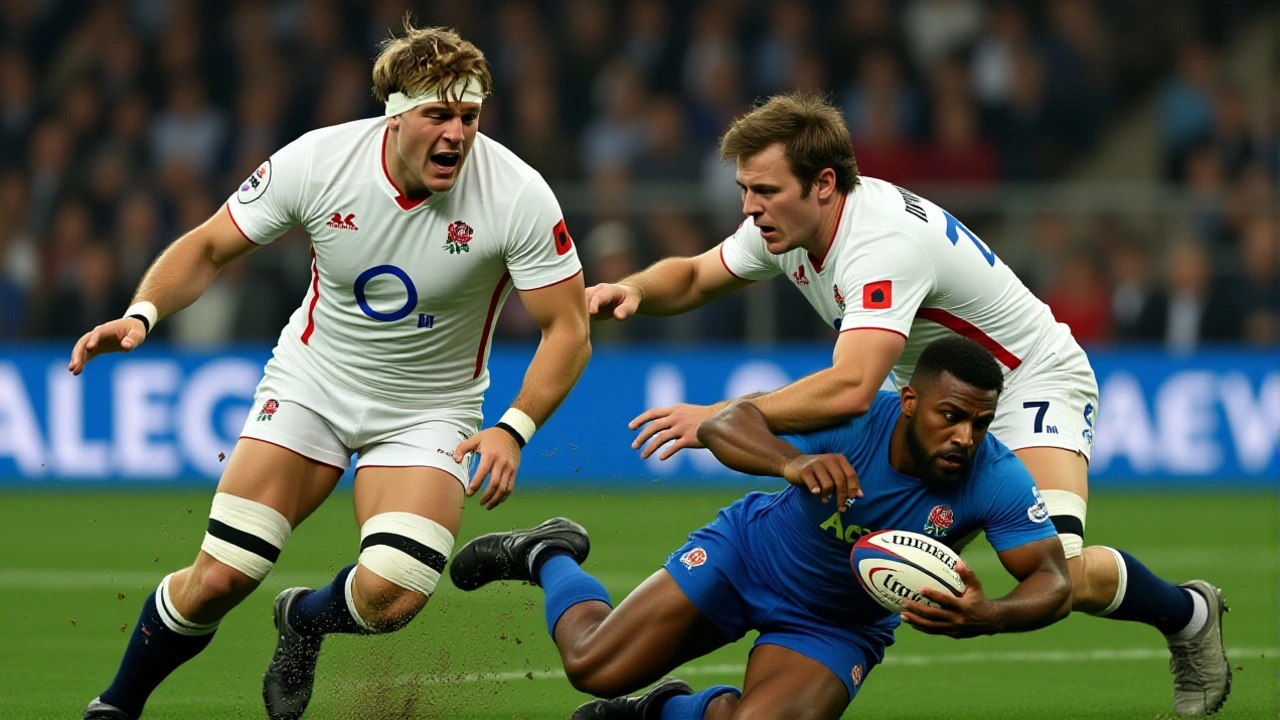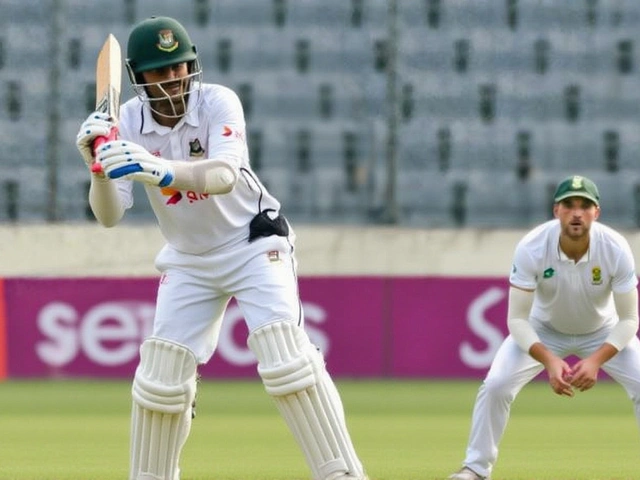
On a crisp Saturday evening in Brighton and Hove, the England Red Roses didn’t just beat the Australia Wallaroos—they announced their dominance to the world. The Women's Rugby World Cup 2025 Brighton & Hove Albion Stadium match wasn’t just a Pool A fixture—it was a statement. England won 68-7, their largest margin of victory in World Cup history, and the crowd of 19,420 roared like they were watching a final. The scoreline didn’t tell the whole story. This was a surgical dismantling, a masterclass in power, precision, and pace that set the tone for a tournament that would redefine women’s rugby.
The Match That Broke the Mold
From the opening whistle, England controlled the tempo. The Wallaroos, who had entered the tournament as one of the strongest challengers, looked overwhelmed. By the 20th minute, England had already scored three tries. At the 50th minute, Abby Dow—a winger whose name was misheard as ‘Herd Cocaine’ in early broadcast transcripts—dashed through a gap in Australia’s defensive line to score her third try of the match. The commentary, later corrected, described it as “try number 53 for England in her own backyard of Brighton.” That number? It wasn’t just poetic. By tournament’s end, England had scored 53 tries across six matches—the most ever in a single Women’s Rugby World Cup.Behind the scenes, Ellie Kildunne was pulling the strings at fly-half, her long, spiraling kicks pinning Australia deep in their own half. At one point, with just two meters to go, referee Aurelie Groizeleau signaled advantage after a penalty. Abby Ward dug out the ball from a ruck, and within seconds, Kildunne was feeding Dow again. The Wallaroos had no answer. By full time, England had racked up 10 tries, converted nine, and held Australia to a single penalty. It was brutal. It was beautiful.
A Tournament That Changed Everything
This wasn’t just a win. It was the first domino in a seismic shift. The Women's Rugby World Cup 2025 ended with 444,465 tickets sold across all venues—more than three times the 138,000 sold in 2021. The final at Allianz Stadium, Twickenham on September 27 drew 81,885 fans, shattering the previous record of 24,000 set in 2017. For context: in 2010, when England last hosted, the final at Twickenham Stoop had fewer than 14,000 spectators. The growth wasn’t just in attendance. Social media impressions hit 1.1 billion. In the UK alone, live TV audiences peaked at 7.2 million during the final.“This tournament didn’t just grow the game,” said Alan Gilpin, Chief Executive of World Rugby. “It proved the game had been waiting for this moment. The passion, the skill, the scale—it’s gone stratospheric.”

Leadership That Carried the Torch
Captain Zoe Aldcroft lifted the trophy with tears in her eyes. She’d missed the 2021 World Cup due to injury. This was her redemption. “We didn’t play for medals,” she said after the final. “We played for every girl watching in a schoolyard, in a village, in a city who’s never seen a women’s rugby match before.”Abby Dow echoed that sentiment. “When I saw 82,000 people standing, screaming, singing our anthem—it wasn’t just about us,” she said. “It was about every woman who’s been told rugby isn’t for her. We showed them it is.”
Even UK Prime Minister Sir Keir Starmer weighed in. “This tournament has been proof of the power of sport to unite, to inspire, to grow our economy,” he said. “The Red Roses didn’t just win a World Cup. They made history.”
What Comes Next?
The Red Roses didn’t rest after the final. They scheduled a high-profile fixture against Spain on August 2, 2025, at Mattioli Woods Welford Road Stadium—a rare post-tournament international, with tickets priced at just £15 for adults. It wasn’t about revenue. It was about accessibility. About visibility. About showing that this momentum isn’t temporary.Coaches are already scouting talent from non-traditional rugby nations. In Kenya, girls’ teams are forming. In Japan, school programs are expanding. The England Rugby academy has doubled its female intake. And the World Rugby board has confirmed a new funding model—25% of commercial revenue will now be reinvested into women’s development globally.

The Bigger Picture
This wasn’t just a win. It was a cultural reset. The numbers tell part of the story: 444,465 tickets, 1.1 billion impressions, 81,885 fans in Twickenham. But the real story is in the quiet moments—the little girl in Brighton who ran onto the pitch after the match to hug Dow, the teacher in Leeds who showed her class the highlights, the father who told his daughter, “You can do this too.”Women’s rugby isn’t catching up anymore. It’s leading. And England, with their record-equalling win over Australia, didn’t just open the door—they kicked it down.
Frequently Asked Questions
How did the attendance at the 2025 Women’s Rugby World Cup compare to previous tournaments?
The 2025 tournament sold 444,465 tickets—more than triple the 138,000 sold in 2021 and over 33 times the 13,253 who attended the 2010 final in England. The final at Twickenham drew 81,885 fans, a record for women’s rugby, compared to just 24,000 in 2017 and under 14,000 in 2010.
Who were the key players for England in their win over Australia?
Winger Abby Dow scored three tries against Australia and finished the tournament with 11 total, tying the World Cup record. Fly-half Ellie Kildunne orchestrated the attack with precise kicking and vision, while captain Zoe Aldcroft led with physical dominance and tactical discipline throughout the match.
What impact did the tournament have on women’s rugby globally?
World Rugby announced a new funding model, dedicating 25% of commercial revenue to women’s development programs. National unions in Kenya, Japan, and Spain reported surging interest, with girls’ participation up by 40% in some regions. The 1.1 billion social media impressions also signaled unprecedented global engagement, especially among Gen Z audiences.
Why was the match against Australia so significant beyond the scoreline?
Australia had been the only team to beat England in a World Cup final (2014). Their defeat in Brighton wasn’t just a win—it was a symbolic passing of the torch. England’s 68-7 victory showed they weren’t just better—they were in a different league. It set the tone for the rest of the tournament, where England outscored opponents 53-13 in tries.
What did World Rugby and UK leadership say about the tournament’s success?
World Rugby CEO Alan Gilpin called it “historic, special, incredible,” noting the game had gone “stratospheric.” Prime Minister Sir Keir Starmer credited the Red Roses with showcasing Britain’s best to the world, highlighting the economic and cultural impact of hosting the event, from tourism spikes to youth participation surges.
Is there a follow-up match scheduled for the Red Roses after winning the World Cup?
Yes. On August 2, 2025, the Red Roses played Spain at Mattioli Woods Welford Road Stadium—a rare post-tournament fixture designed to sustain momentum. Tickets were priced at just £15 for adults and £5 for juniors, emphasizing accessibility over profit. The match drew over 15,000 fans, proving demand remains high even after the World Cup.


